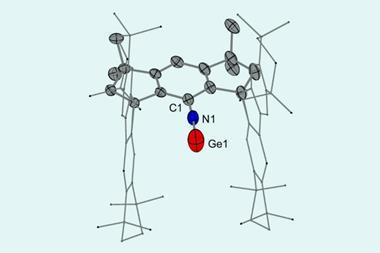Cheap, flexible dosimeters a step closer thanks to funding boost for UK researchers
UK scientists have shown for the first time that polymers could compete with silicon for detecting x-ray radiation. Now, a funding boost gives the researchers the chance to work with industry and bring the technology closer to market.
The one-year award from the Science and Technology Facilities Council will allow lead researcher Paul Sellin of the University of Surrey, Guildford, to improve the polymers which offer advantages over conventional silicon including flexibility, lower cost and larger area devices.
Eventually, Sellin expects to see polymers put to use in dosimeters that measure personal exposure to radiation, as worn by healthcare and security personnel.
Sellin’s team observed that x-ray radiation generated a current in films of two common conducting polymers, MEH-PPV and PFO. The process is similar to the way that sunlight generates electricity in a polymer solar cell. ’The novelty isn’t the material itself, it’s the application of it,’ said Sellin. These preliminary results were reported earlier this year in the journal Applied Physics Letters.
The size of the current depends on the energy of the photons that hit the polymer film. Crucially, the sensitivity of the thin polymer layer to x-rays was comparable to silicon of similar thickness. Now the major challenge for Sellin’s team and their collaborators at UK firm Centronic Ltd is to build up the films to the same thickness seen in common silicon detectors. This is vital for detecting low levels of the harmful rays.
The polymers also hold another trump card over silicon. The atomic masses in the polymers are a better match than silicon to human tissue. This would simplify calibration when it comes to calculating exposure. ’The materials respond to x-rays in the same way as your skin,’ said Sellin. ’They are organic, so they are the same sort of make up as us.’
The new funding will allow Sellin’s team to screen the electronic properties of new polymers to search for even better materials. They will also attempt to blend nanoparticles into the prototype devices.
Sellin hopes to follow up this groundwork with more development, and is confident that he could have a commercially available dosimeter device in three to five years. Looking further ahead, Sellin told Chemistry World that ’if you want to dream dreams’, the polymers could be used in flexible bandages that could measure radiation doses in situ, or even in fibres that could be woven into garments, but admits there is still much to do.
Craig Buttar is a physicist in the Detector Development Group at the University of Glasgow, UK. He agrees that making large detectors would be easier with polymer films. ’If you can make a nice polymer that can do this well then that becomes a nice tool,’ he told Chemistry World. ’Another advantage is being able to shape it around the human body, and get it into nooks and crannies.’ But Buttar stressed that low molecular weight materials are less efficient at absorbing X-rays than heavier, inorganic elements.
Tom Westgate
References
et alAppl. Phys. Lett91, 033509 (DOI: 10.1063/1.2748337)






No comments yet